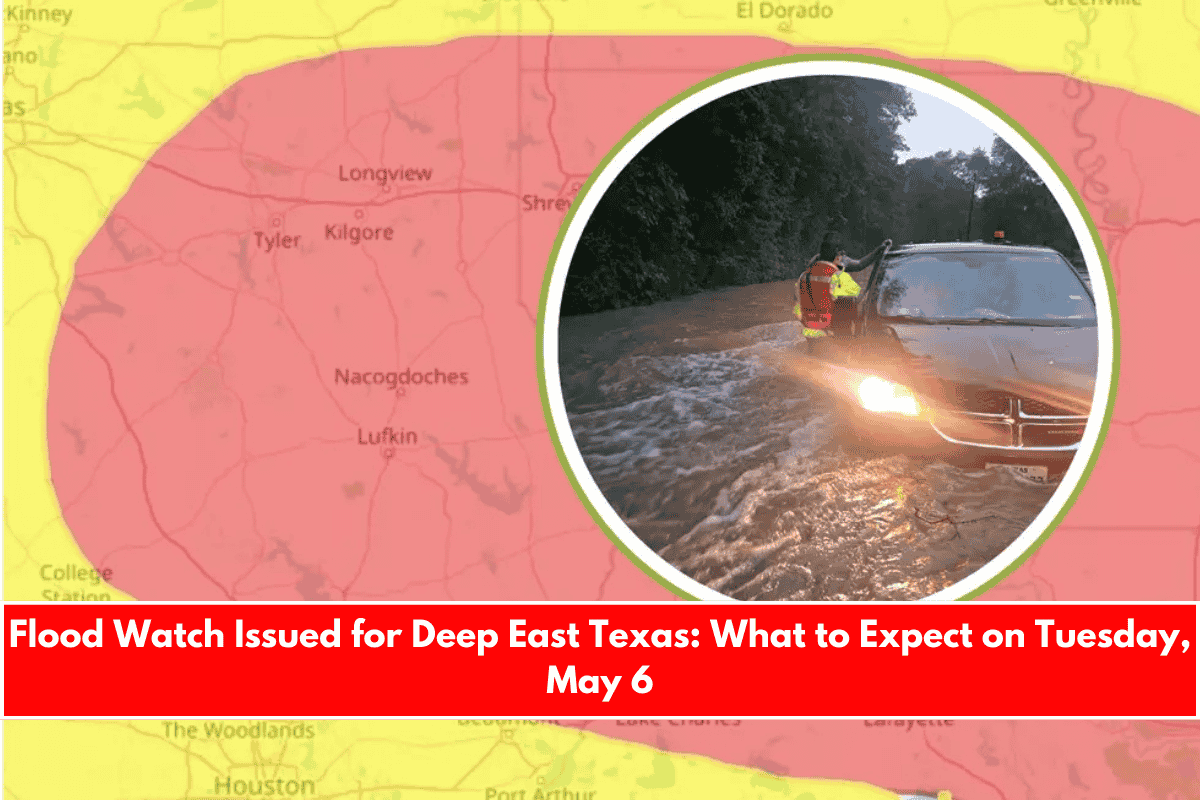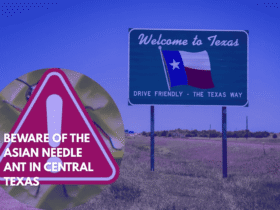A major Flood Watch has been issued for Deep East Texas, including cities like Lufkin, Nacogdoches, and all nearby counties. The warning comes from the National Weather Service (NWS), and it will be in effect from 7 a.m. on Tuesday, May 6, until 7 a.m. on Wednesday, May 7.
This is not a small alert — the Flood Watch area covers large parts of six states: New Mexico, Oklahoma, Texas, Arkansas, Mississippi, and all of Louisiana. If you’re in this zone, it’s important to stay informed and prepared.
What Will Happen on Tuesday?
According to the NWS, rain chances in Lufkin will start increasing quickly on Tuesday morning:
- From 30% early morning, rising to 75% by mid-morning
- Reaching 90% by early afternoon
The heaviest rainfall is expected Tuesday afternoon and evening in the Pineywoods region. In just a few hours, 2 to 4 inches of rain may fall, and some places might even get more than 4 inches.
This heavy rainfall could easily cause flash floods, especially since parts of Angelina County already received over 5 inches of rain last Friday. The soil is still soaked, and even a small amount of extra rain could trigger flooding quickly.
What Does the Red Alert Mean? (Excessive Rainfall Outlook)
The Weather Prediction Center uses a special tool to check if rainfall will exceed what the land can handle. This is called the Excessive Rainfall Outlook.
For Tuesday, areas including Lufkin, Nacogdoches, Tyler, and Beaumont are marked in red on the map. This means there is at least a 40% chance of flash flooding within 25 miles of your home.
With the ground already saturated, flash flooding could happen very fast. That’s why this red alert is serious and should not be ignored.
Will There Be Severe Weather Too?
Yes, and that’s another reason to be alert. On Tuesday afternoon, parts of East and Central Texas could also face strong to severe thunderstorms.
Here’s what to expect:
- Large hail, especially near Austin
- Straight-line winds over 60 mph
- Tornadoes are possible in East Texas
These storms could bring dangerous weather conditions, so it’s best to stay indoors during heavy rainfall and avoid travel unless absolutely necessary.











Leave a Reply